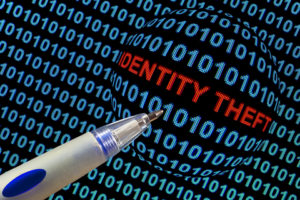7 Things You Can Do To Protect Your Identity
One of my favorite commercials is a guy working out with his personal trainer. The trainer asks him if he’s been eating his vegetables every day. When he replies, “When I can,” the trainer bops him on the head. He could have had a V8!
 Just like the man thought that eating his daily vegetables would be hard, sometimes protecting your identity seems like a chore. But it doesn’t have to be that way. Here are 7 “duh” steps you can take to protect your identity this holiday season and all year round.
Just like the man thought that eating his daily vegetables would be hard, sometimes protecting your identity seems like a chore. But it doesn’t have to be that way. Here are 7 “duh” steps you can take to protect your identity this holiday season and all year round.
- Inspect credit card statements. Make a habit of regularly looking through your credit card statements for strange looking activity. If you notice just one unauthorized charge, assume that someone out there will strike again, and again and again—unless you take immediate action and contact your credit card company.
- Shred documents with personal information. Thieves will rummage through your garbage and recycling searching for intact documents that show Social Security numbers, credit cards and bank account information, etc. The next best thing to a cross-cut shredder is scissors. Shear up anything that could be revealing, including credit card purchase receipts.
- Review your credit reports. At least once a year, review your credit reports from the three major bureaus. This way you’ll be able to spot any suspicious actions, such as a thief opening a credit card account in your name.
- Credit freeze. If you’ve been a victim of identity theft, you might want to consider putting a freeze on your credit.While this will prevent you from getting loans or credit cards until you unfreeze it, this will also block criminals from opening accounts in your name and smearing your credit.
- Limit accessibility. In addition to using a shredder or scissors, consider getting a safe where you can store sensitive documents and limit the number of credit cards you carry with you. Have a list of important phone numbers (e.g., bank, credit card companies) already made up, in the event that you need to contact them immediately upon realizing you have lost or someone has stolen your identity or your physical credit cards, wallet, etc.
- Password protection. If your device is lost or stolen, will someone be able to simply pick it up and access all your data? They won’t if it is password protected. Don’t use your cat’s name as your password; rather create a complicated password with upper and lower-case letters and numbers.
- Use comprehensive security software. It is essential that all your digital devices have updated security software, like McAfee LiveSafe™ service that can safeguard your data and protect against identity theft.
For more tips on protecting your identity, check out the Intel Security Facebook page or follow them on Twitter.
Robert Siciliano is an Online Security Expert to McAfee. He is the author of 99 Things You Wish You Knew Before Your Mobile was Hacked! Disclosures.


























